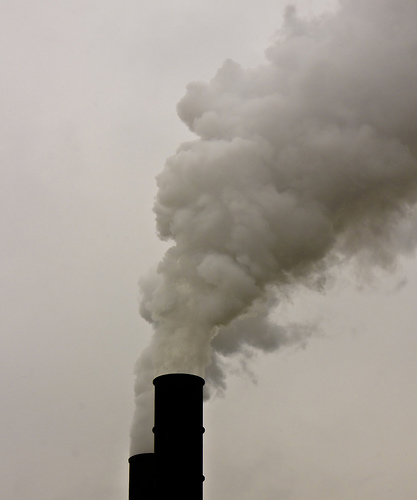Pa. would reduce carbon emissions by more than 30 percent under new EPA rule
-
Katie Colaneri

Paul J Everett via Flickr
The Environmental Protection Agency has unveiled a plan to reduce carbon dioxide emissions from the nation’s power plants by 30 percent by the year 2030. Pennsylvania would be required to come up with a plan to reduce its emissions by about 32 percent.
Pennsylvania would be required to reduce greenhouse gas emissions by about 32 percent over the next 15 years under new federal regulations announced on Monday.
It is the first time the Environmental Protection Agency has proposed regulations specifically aimed at cutting carbon dioxide emissions generated by the nation’s power plants. And it is one of the Obama administration’s key initiatives to address climate change.
The overall goal is a 30 percent reduction in emissions nationwide by the year 2030. States will be directed to craft plans to meet their own specific targets. In a conference call with reporters, senior agency officials said the targets are based on a number of factors, including the state’s current energy mix and proximity to natural gas supplies. Click here to see the EPA’s interactive map showing each state’s emission targets.
The agency’s emphasis on flexibility for the states was a relief to Jake Smeltz, president of Pennsylvania’s Electric Power Generation Association, an industry trade group.
“We didn’t want a command and control approach,” Smeltz said. “What we wanted and asked for is that each state be the driver. Let the federal government create the target and let state governments figure out how to reach it.”
New focus on energy efficiency, natural gas and renewables
Smeltz predicts Pennsylvania will get credit for the efforts it has already made to lower emissions, beef up energy efficiency programs and see more power plants switching from coal to natural gas.
Today’s proposal is the latest in a suite of new regulations aimed at power plants. Last fall, the agency proposed rules to limit emissions from all future power plants.
Smeltz said the power generation sector has undergone many changes in the last five years, including the closure of some coal-fired power plants in Pennsylvania.
“Society has decided that they would prefer to see other sources that are less emitting than coal-fired power plants,” he said, adding that this decision could come with tradeoffs like higher prices for electricity.
Environmental groups are championing the plan which they say will force states to invest more in renewable energy and reduce their dependence on coal.
“Power plants account for 40 percent of the carbon pollution in the U.S. and many of those power plants are in Pennsylvania and neighboring states, fouling our air and damaging public health,” said Cindy Dunn, president of PennFuture, in a statement.
“We need to be very cautious”
However, in a state that ranks fourth in the nation for coal production, the plan is also meeting immediate criticism.
Pennsylvania Governor Tom Corbett released a statement expressing his concerns that the rules could cause more coal-fired power plants to close and thousands of people to lose their jobs across the country.
Corbett has previously criticized Obama’s climate plans as a “war on coal,” echoing his counterparts in other major energy-producing states. The governor told StateImpact Pennsylvania in a recent interview that climate change is “subject of debate” and that other nations like China and India should also be expected to take action.
“I think we need to be very cautious about how the federal government’s going to approach this,” Corbett’s Energy Executive Patrick Henderson said in a phone interview.
“What we want to have at the end of this is that strong, diverse energy portfolio that we have in Pennsylvania right now come out on the other end where coal is still a significant contributor to our generation portfolio.”
Potential health impacts of lowering carbon emissions
The proposed carbon limits could carry major health implications, preventing tens of thousands of deaths, according to the EPA.
Janice Nolen, an assistant vice president with the American Lung Association, says that’s in part because the way power plants reduce carbon can also reduce other pollutants like sulfur dioxide and nitrogen oxide.
“They can shorten life, cause heart attacks and strokes, cause asthma attacks…the World Health Organization has found they can cause lung cancer,” says Nolen. “So breathing less of those in is going to be a benefit.”
The EPA expects to finalize the rules in exactly one year and require states to submit their plans by June 2016. One of four national hearings on the new rules will be held in Pittsburgh this July.
Elana Gordon of StateImpact Pennsylvania partner WHYY contributed reporting.
















